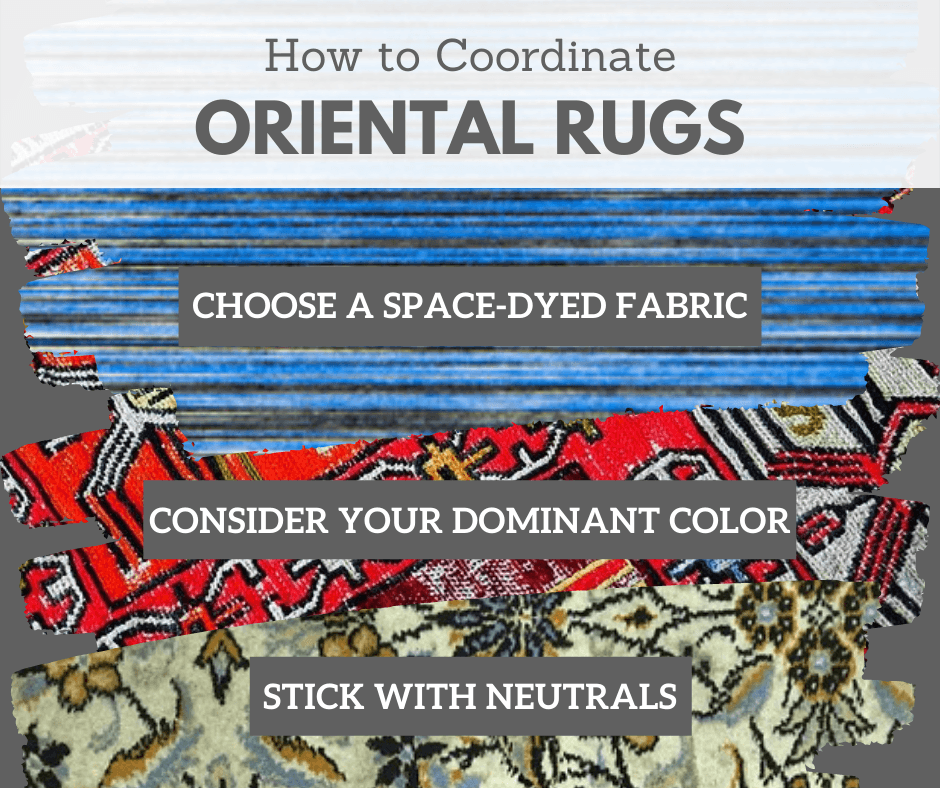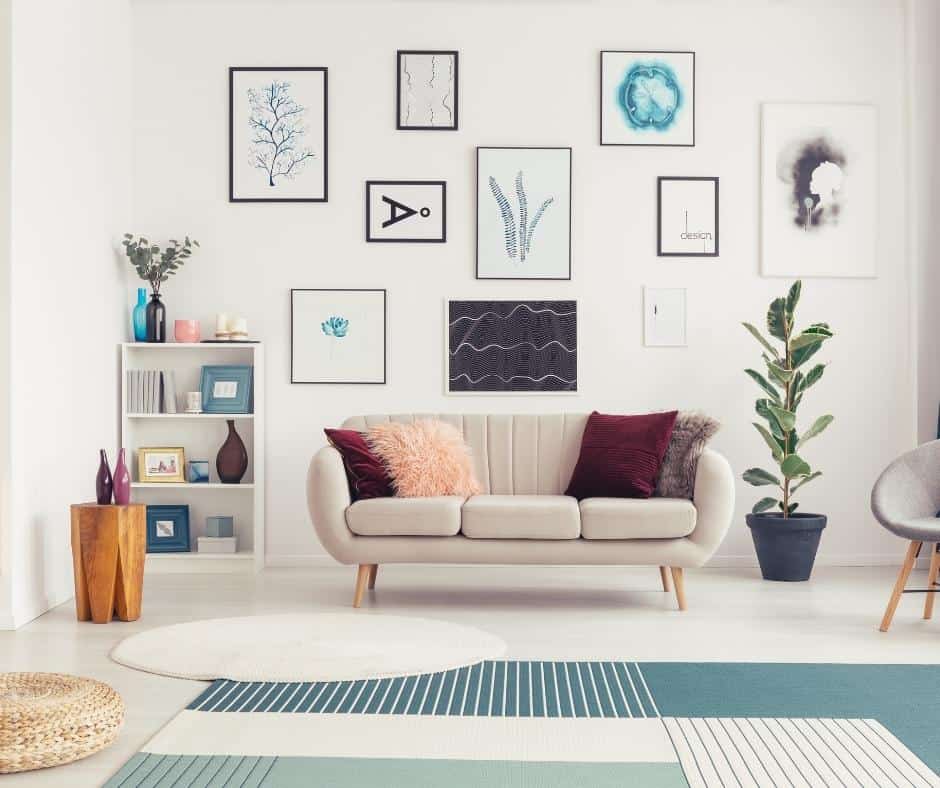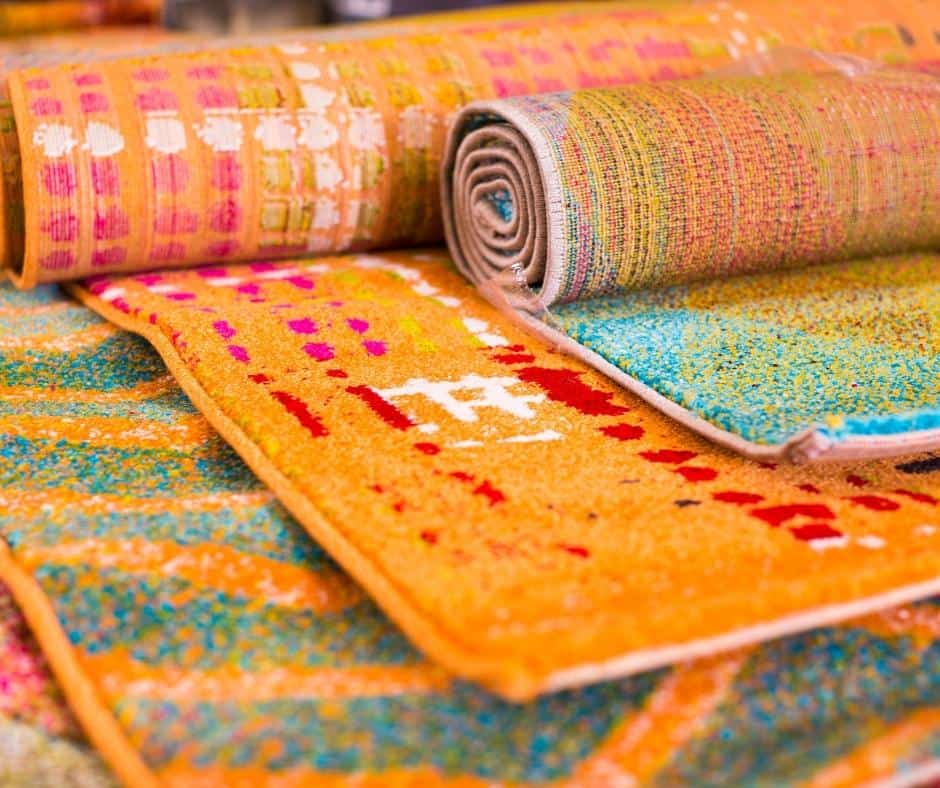Is your room too small to add a rug, or do you have a rug that no longer seems to go with anything? Then it’s time to make some changes. Coordinating rugs for a perfect space might be easier than you think. Let us show you how to do it.
It’s important to have an idea of what colors would look good in your space before going shopping. That way, you’ll know which color schemes and patterns work and which ones don’t.
A rug can create different effects in different rooms, and it will have a significant impact on how you feel inside your living space. In bedrooms or smaller spaces, rugs should be reasonably small so they don’t occupy too much space on the floor.
In This Article We'll Discuss
How to Coordinate Rugs in Adjacent Rooms

Rug placement has always been a problem for homeowners. Some people prefer to have their adjacent room rugs placed in the center of the room, while others might be more inclined to have them pulled toward one side of the space.
Although there is no right or wrong way of doing this, there are some general rules you can follow to ensure that your rug is placed perfectly in your home.
Step # 1: First, think about the arrangement of your furniture before deciding where you would like the rug to go. This will help you choose a rug that will best complement your existing pieces. And, it will ensure that your rug provides enough comfort for activities like watching TV or reading a book.
Step # 2: After you have decided on your furniture placement, you should consider creating boundaries using carpets or rugs. You might want to place simple runners along the walls, or you could opt for one large rug. Remember, you can arrange them to form a pattern that complements your existing style.
Step # 3: If you’re not sure how to fit two rugs together, consider arranging them in an L-shape design. That way, they will fit against each other perfectly and there won’t be any gaps between them. This is great if you don’t want anything dominating your room, but it does mean that there is less flexibility for things like walking through doorways.
Step # 4: If you want a second rug running parallel, but not touching the main one, think about having them joined together using a seam. That way, they will still be close enough to make a cohesive design in the room without any problem. You can also add mats or borders to accentuate this space.
Step # 5: If the floor in your home is sparsely decorated, you might prefer something with a larger pattern. In this case, you should try to avoid putting two patterned rugs next to each other because they will fight against each other. And, they’ll end up looking messy rather than aesthetically pleasing.
How Do You Coordinate Oriental Rugs

The beautiful details of oriental rugs make them very hard to coordinate with other pieces in the home. Since oriental rugs are traditionally hand-woven, each rug has unique color variations and beautiful imperfections that come from this process.
The uniqueness of these rugs can be expanded to include the rug’s age, which is often difficult to determine. Therefore, it is nearly impossible for two oriental rugs to match perfectly.
In that case, you can coordinate your oriental rug so that it fits seamlessly into any room in your home by:
- Choosing a space-dyed fabric
- Considering your dominant colors
- Sticking with neutrals
How to Coordinate Area Rugs in Your Home
To coordinate area rugs in your home, you should position them so the eye is drawn toward the focal point of your room. This may be a fireplace, window treatment, or piece of artwork. The general rule is to place an area rug 12 inches from the wall around it and 18 to 24 inches away from another area rug.
For example, if you have two area rugs next to each other, they should be 36 inches apart and at least two feet away from any walls.
If you want both of these rugs positioned closer together, put one against a wall and allow 48-60 inches of open space between the two. Then, fill space with floor-length drapes or a couch.
How Do You Pair Rugs

Pairing rugs may seem like an easy task, but there are some tricks to help you get it just right. Here are the main things you need to keep in mind when pairing area rugs:
- Make sure they have the same ‘feel.’ Whether they are adjacent or opposite each other, make sure they play off of each other’s personalities. If one is bright and bold, make sure the next rug isn’t too subtle for contrast.
- Seek balance between opposing elements of color, pattern and texture. That doesn’t mean that every rug has to be symmetrical, or that you can’t use a zigzag pattern on one end with a floral print on the other end. It means you need to think about harmony vs. contrast.
- Make sure the rugs are sized proportionally. This may seem obvious, but it’s easy to overlook this detail when you’re shopping for rugs. A rug that’s too small will look wrong no matter how well it matches another one or what design it has.
- It’s important to consider how you’ll be using them. If they are primarily used for sitting/lounging, consider pairing rugs with comfort in mind. Look for relatively plush and soft materials instead of something more delicate and formal.
- Make sure they are both in good condition. This means no holes, stains, or tears. You don’t want to pair two rugs because you think they look good together only to find out that one has a stain in the middle of it.
- Take your furniture into account. If your existing furniture isn’t well suited to coordinate with the rugs you choose, the whole room’s design will be off.
Can You Use the Same Rug Twice?
A rug can be used more than once if it is dry-cleaned. If the rug has any damage— permanent or not— then it cannot be dry-cleaned and should just be replaced. For precious carpets, consider asking a local carpet store for tips on cleaning methods that would work best for your specific carpet.
How Do You Coordinate Rugs in an Open Floor Plan?
So, you have an open floor plan. Do you need to buy one rug for the entire space, or can you coordinate rugs within it? Let’s take a look at what kind of layouts are common in open floor plans and how you might choose to arrange your rugs according to those patterns.
If your home has a long but narrow shape, the most common pattern is to place furniture perpendicular to the longest wall. As a result, that wall will be bare except for large pieces of furniture like cabinets or bookcases.
In this case, you don’t need any other layout goals beyond making that wall feel well-furnished. You might want to consider putting up shelves on that lonely stretch of wall, or adding some art if you don’t already have some. Also, you’ll want to make sure any seating or other furniture is spread out across the whole floor and not clustered in a small area.
If your home has a long and wide-open space, you may want to keep all the primary furniture pieces along the same wall rather than spreading them around for reasons of symmetry.
In this case, you could add some secondary elements in front of these large pieces on that side of the room. For example, artwork over a chair or plants in containers in front of sofas would add variety to the space.
Conclusion

As you can see, not all patterns are suitable to be used in the same room. One must know how to coordinate rugs for a perfect space. This will depend on the size and layout of your room. In addition, it will be important to take your own style into account. After all, it is your space.

